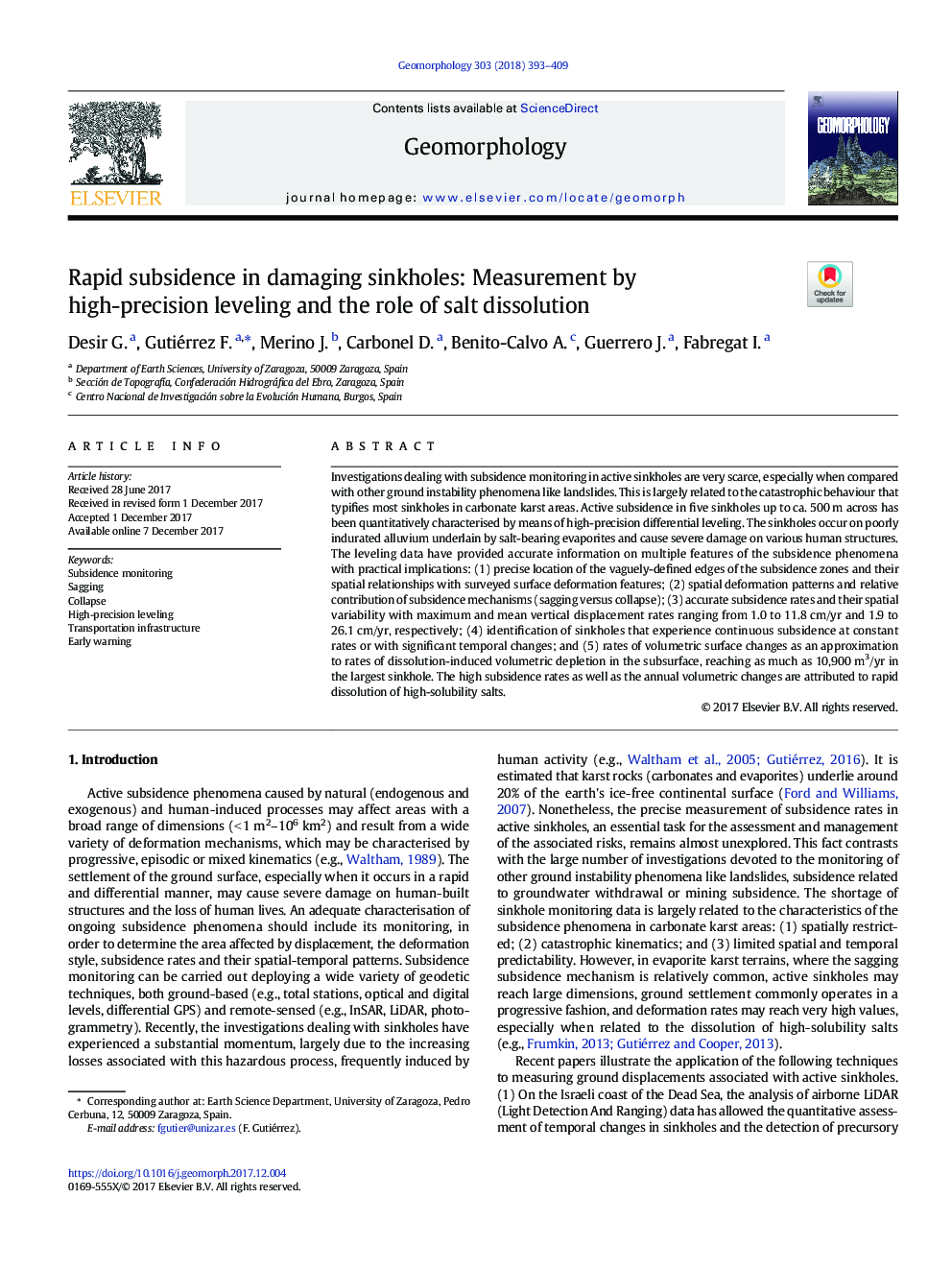| Article ID | Journal | Published Year | Pages | File Type |
|---|---|---|---|---|
| 8908240 | Geomorphology | 2018 | 17 Pages |
Abstract
Investigations dealing with subsidence monitoring in active sinkholes are very scarce, especially when compared with other ground instability phenomena like landslides. This is largely related to the catastrophic behaviour that typifies most sinkholes in carbonate karst areas. Active subsidence in five sinkholes up to ca. 500Â m across has been quantitatively characterised by means of high-precision differential leveling. The sinkholes occur on poorly indurated alluvium underlain by salt-bearing evaporites and cause severe damage on various human structures. The leveling data have provided accurate information on multiple features of the subsidence phenomena with practical implications: (1) precise location of the vaguely-defined edges of the subsidence zones and their spatial relationships with surveyed surface deformation features; (2) spatial deformation patterns and relative contribution of subsidence mechanisms (sagging versus collapse); (3) accurate subsidence rates and their spatial variability with maximum and mean vertical displacement rates ranging from 1.0 to 11.8Â cm/yr and 1.9 to 26.1Â cm/yr, respectively; (4) identification of sinkholes that experience continuous subsidence at constant rates or with significant temporal changes; and (5) rates of volumetric surface changes as an approximation to rates of dissolution-induced volumetric depletion in the subsurface, reaching as much as 10,900Â m3/yr in the largest sinkhole. The high subsidence rates as well as the annual volumetric changes are attributed to rapid dissolution of high-solubility salts.
Related Topics
Physical Sciences and Engineering
Earth and Planetary Sciences
Earth-Surface Processes
Authors
Desir G., Gutiérrez F., Merino J., Carbonel D., Benito-Calvo A., Guerrero J., Fabregat I.,
